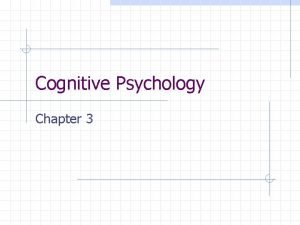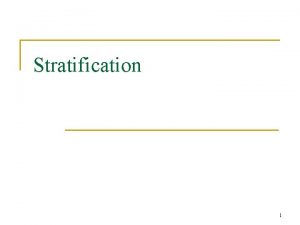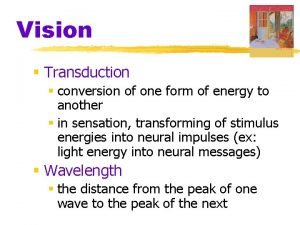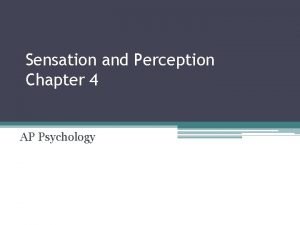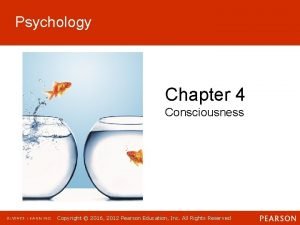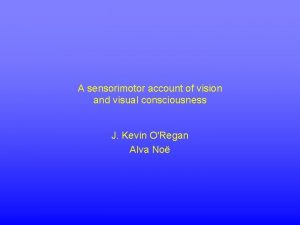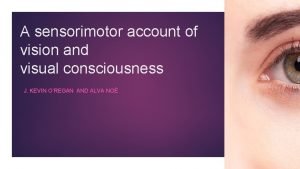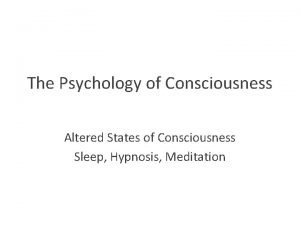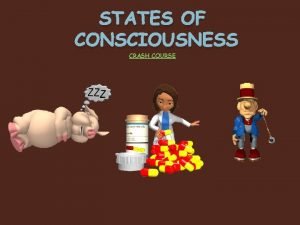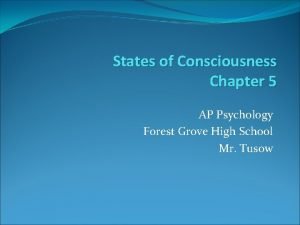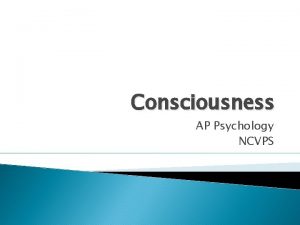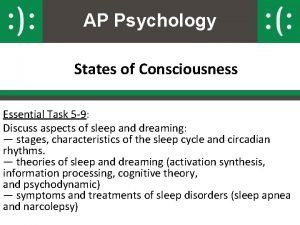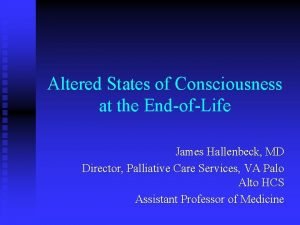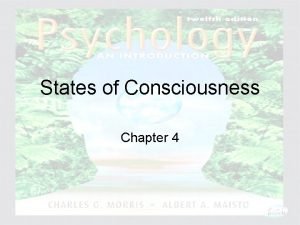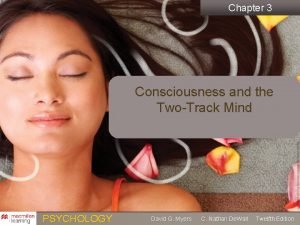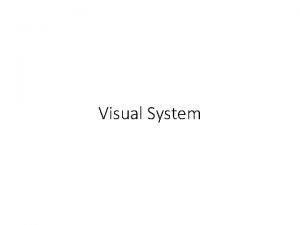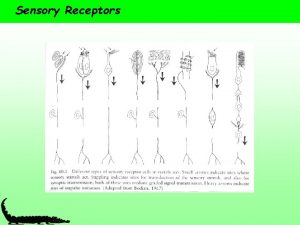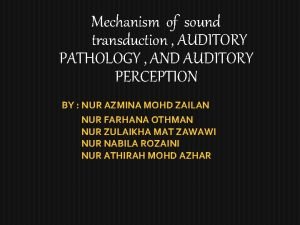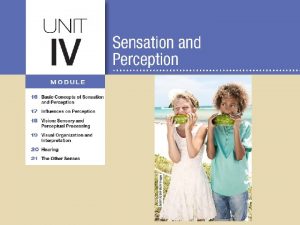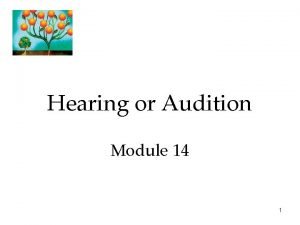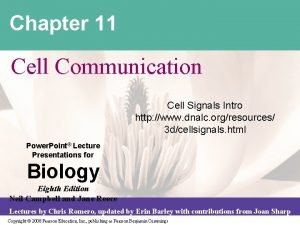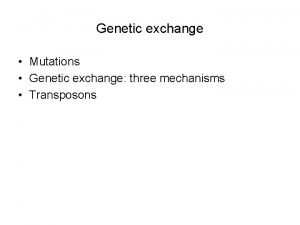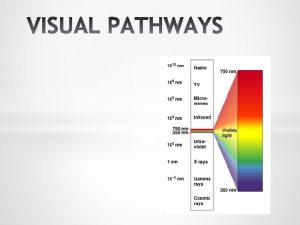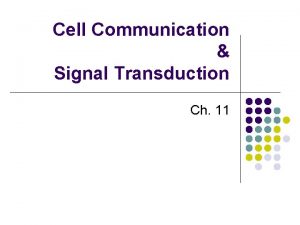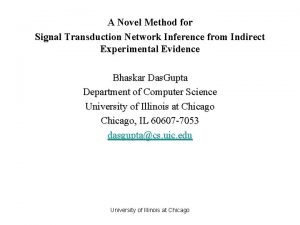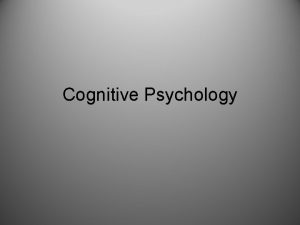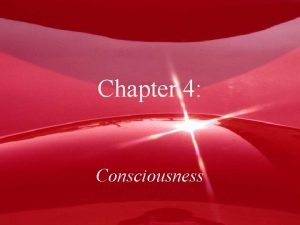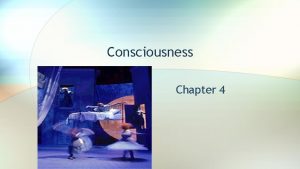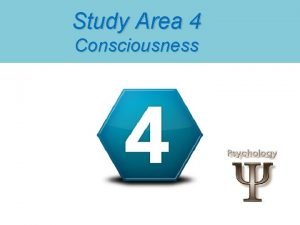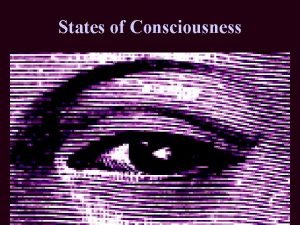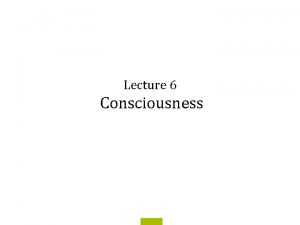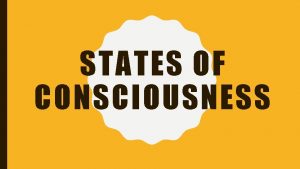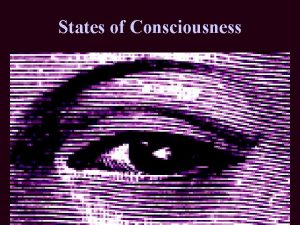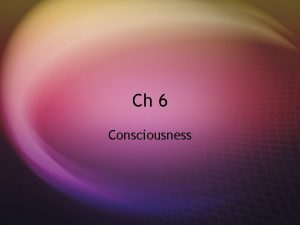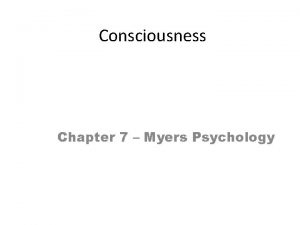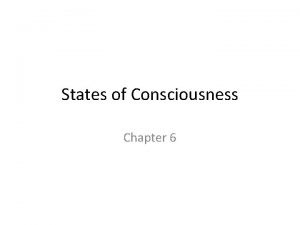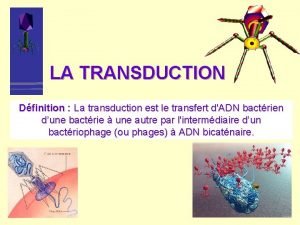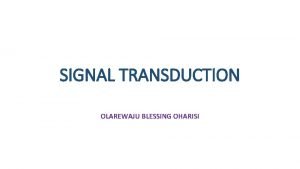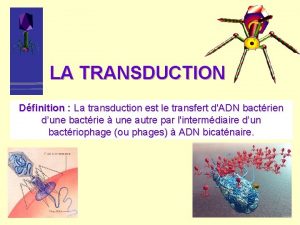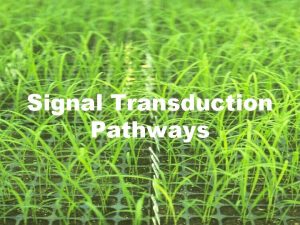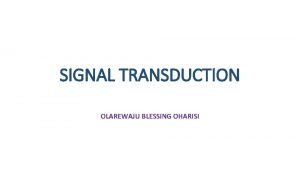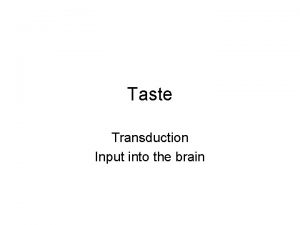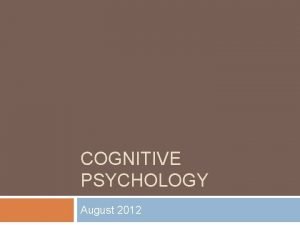Cognitive Psychology Chapter 3 Visual Consciousness Transduction of





























- Slides: 29

Cognitive Psychology Chapter 3


Visual Consciousness Transduction of the visible spectrum (400 nm to 700 nm) of electromagnetic radiation. Crossing of the visual pathways from retina to primary visual. Left visual field represented in right hemisphere.



Visual Consciousness A critical periods for cortical development in cats show that primary visual cortex is necessary for visual consciousness. Blindsight in humans: Damage to primary visual cortex eliminates visual consciousness but a second pathway allows accurate discrimination.


Types of Agnosia Apperceptive Agnosia: object recognition fails because of difficulties in identifying the visual features of a perceptual category. Associative agnosia: object recognition fails because of difficulties in identifying the functional features that define a semantic category.


Pattern Recognition Refers to the step between the transduction and perception of a stimulus in the environment and its categorization as a meaningful object. Agnosia—failure of pattern recognition caused by brain lesions.


Top-down vs. Bottom-up Processes Organized knowledge representations called schemas direct exploration of objects and events in the environment. Conceptually-driven processes provide expectations from the top-down. Data-driven processes sample features from the bottom-up.


Word Superiority Effect WORK vs. ORWK vs. K Surprisingly, a single letter (K) is recognized faster in the context of a whole word (WORK) than when presented as an isolated letter. A nonword (ORWK) doesn’t provide this top-down advantage.

How are objects represented? Distinctive feature lists may suffice for printed letters (Z is detected faster here OQBZPD than here TLKZMV). But the structural relations among features are often as important as the features themselves.





Face Perception Holistic vs. Analytic Processing Faces are unique in that holistic processing is much stronger than analytic processing for them as compared with other objects.


Speech Recognition Phonological segments that signal meaning (phonemes) unfold at 12/s or more. Fast, effortless processing of 40, 000 bits/s implies a speech module. The structural relations among phonemes—the context in which a phoneme occurs—is critical to recognition.


Why context is important? Co-articulation: Each segment of speech provides clues about more than one phoneme. That is, multiple phonemes are articulated at the same time.


Why context is important? Co-articulation: Each segment of speech provides clues about more than one phoneme. Phonemes lack invariant distinctive features


Top Down Processing Phonological segments are continuous in speech. Pauses heard are often illusions constructed by imposing phonemes from the top. Subtle variations are ignored unless they fall at phoneme boundaries (categorical speech perception).

 Transduction cognitive psychology
Transduction cognitive psychology Us social hierarchy
Us social hierarchy Transduction psychology
Transduction psychology What are subliminals
What are subliminals Psychology chapter 4 consciousness
Psychology chapter 4 consciousness A sensorimotor account of vision and visual consciousness
A sensorimotor account of vision and visual consciousness A sensorimotor account of vision and visual consciousness
A sensorimotor account of vision and visual consciousness Altered state of consciousness psychology
Altered state of consciousness psychology Crash course states of consciousness
Crash course states of consciousness States of consciousness ap psychology
States of consciousness ap psychology Consciousness definition ap psychology
Consciousness definition ap psychology Ap psychology states of consciousness
Ap psychology states of consciousness Altered state of consciousness psychology
Altered state of consciousness psychology Altered state of consciousness psychology
Altered state of consciousness psychology Ap psychology states of consciousness
Ap psychology states of consciousness Chapter 7 states of consciousness
Chapter 7 states of consciousness What is the place of consciousness in psychology's history
What is the place of consciousness in psychology's history Cognitive and non cognitive religious language
Cognitive and non cognitive religious language Sensory transduction
Sensory transduction Thermoreceptor
Thermoreceptor Signal transduction pathway pogil
Signal transduction pathway pogil Transduction in the ear
Transduction in the ear Where does transduction occur in the ear
Where does transduction occur in the ear Transduction in the ear
Transduction in the ear 3 stages of cell communication
3 stages of cell communication Generalized transduction
Generalized transduction Visual association cortex
Visual association cortex Cell signal transduction
Cell signal transduction Essential cell biology chapter 16
Essential cell biology chapter 16 Signal transduction
Signal transduction
